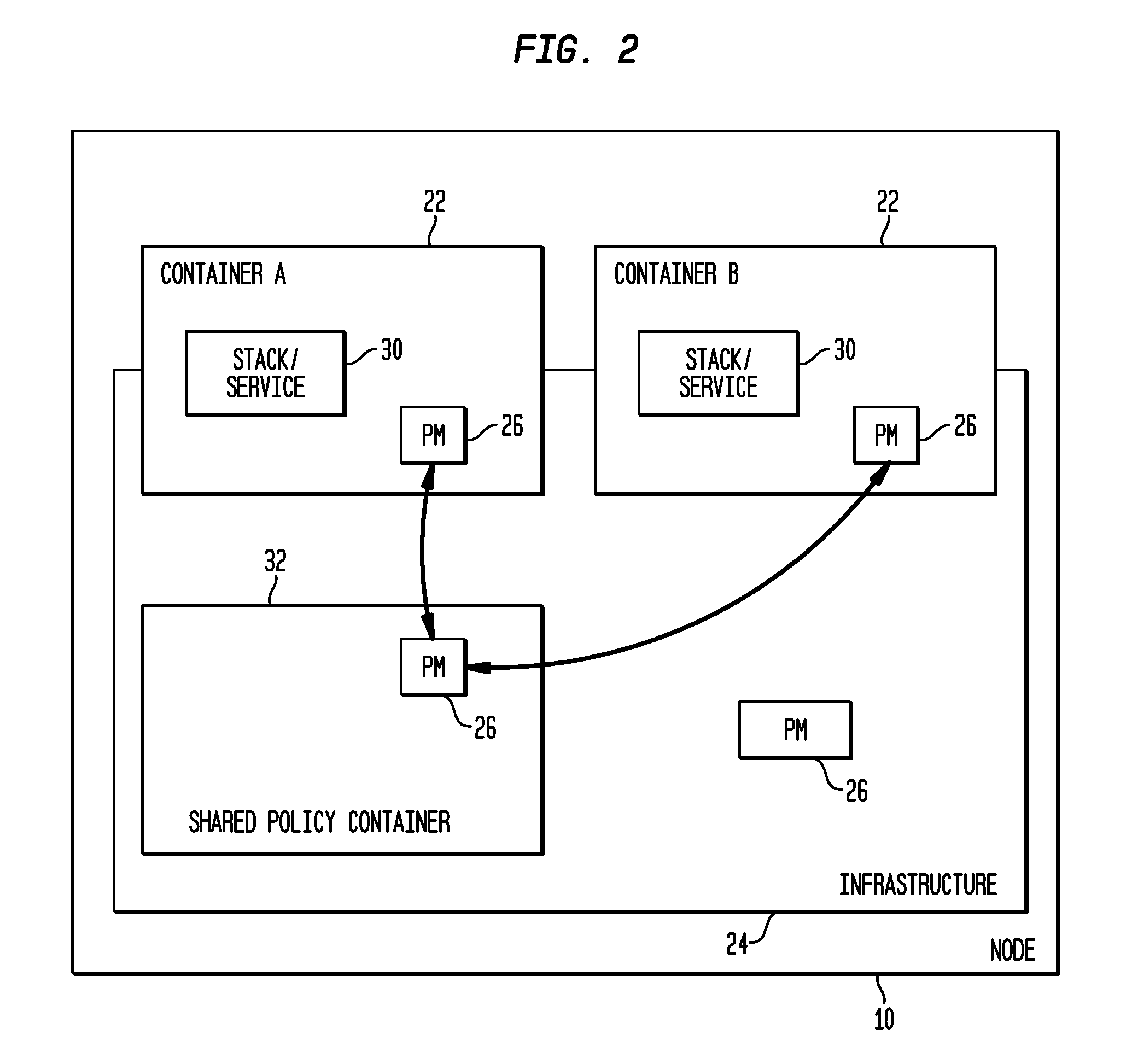System and method for policy based management for a high security MANET
a policy-based management and high-security technology, applied in the field of network security and network management, can solve the problems of increasing the chances of decision hijacking or interference, not addressing the security of architecture, and nodes in the network may be undetected attackers
- Summary
- Abstract
- Description
- Claims
- Application Information
AI Technical Summary
Benefits of technology
Problems solved by technology
Method used
Image
Examples
Embodiment Construction
[0025]The invention comprises a method and a system for a PBMS which addresses high security. Communications domains are assumed to be isolated within the node using security containers, called herein DCoI (Dynamic Community of Interest). A node can be a network device or a collection of network devices. Since one node may be running multiple applications and / or services, the node may have multiple containers. DCoI is illustrated in FIG. 1, where nodes 110 and 212 belong to DCoI A 16, nodes 212 and 314 to DCoI B 18, and nodes 110, 212 and 314 belong to DCoI C 20. A network device with multiple containers 22 consists of a base infrastructure 24 (or DOMO for virtual machine) and several containers 22. The communication among the containers 22 over the network is restricted to only the DCoI 16, 18, 20 that the container belongs to.
[0026]A container 22 defines a security boundary around the node 10, 12, 14 and includes resources for a single DCoI16, 18, 20. In one embodiment, it is impl...
PUM
 Login to View More
Login to View More Abstract
Description
Claims
Application Information
 Login to View More
Login to View More - R&D
- Intellectual Property
- Life Sciences
- Materials
- Tech Scout
- Unparalleled Data Quality
- Higher Quality Content
- 60% Fewer Hallucinations
Browse by: Latest US Patents, China's latest patents, Technical Efficacy Thesaurus, Application Domain, Technology Topic, Popular Technical Reports.
© 2025 PatSnap. All rights reserved.Legal|Privacy policy|Modern Slavery Act Transparency Statement|Sitemap|About US| Contact US: help@patsnap.com



